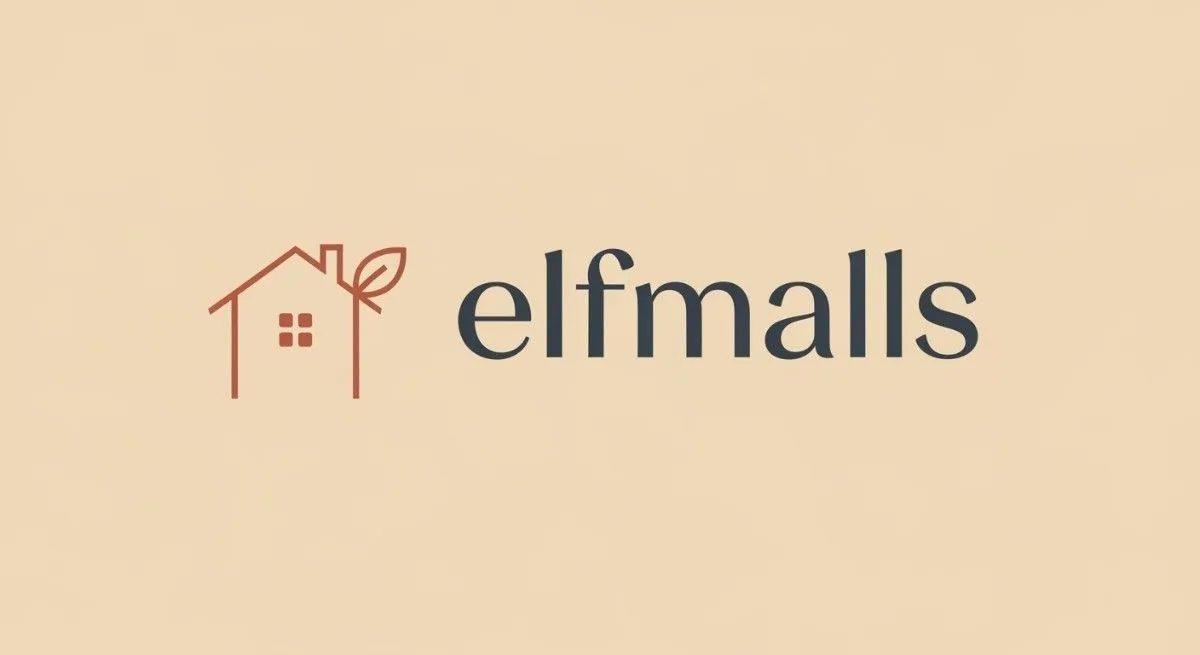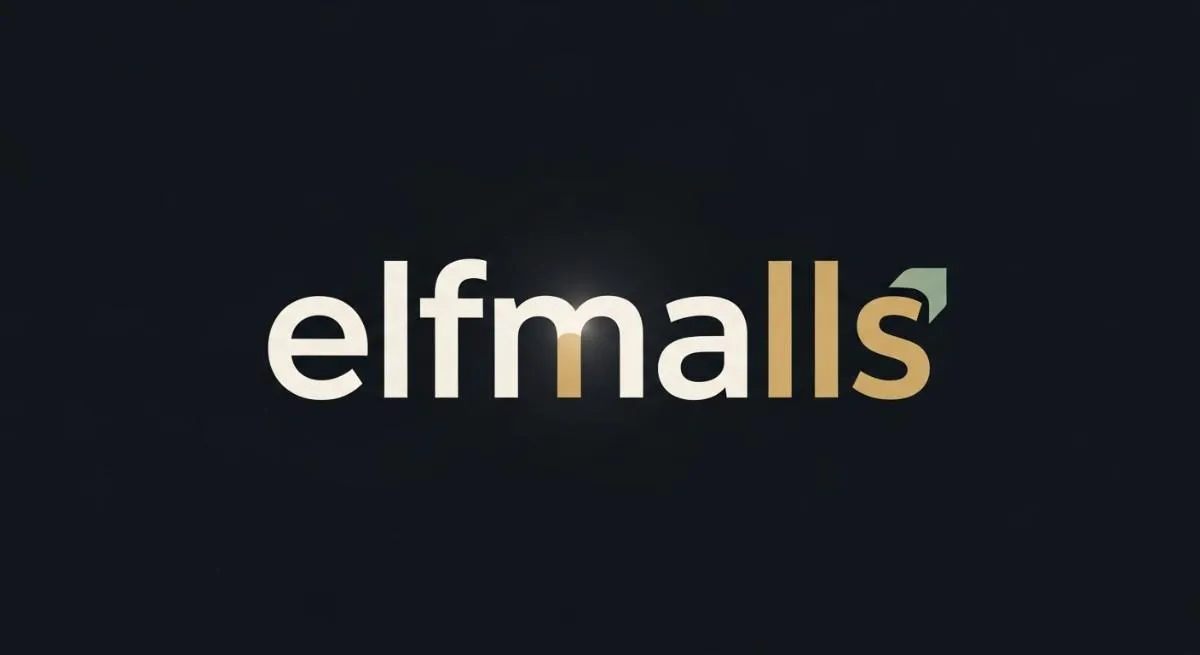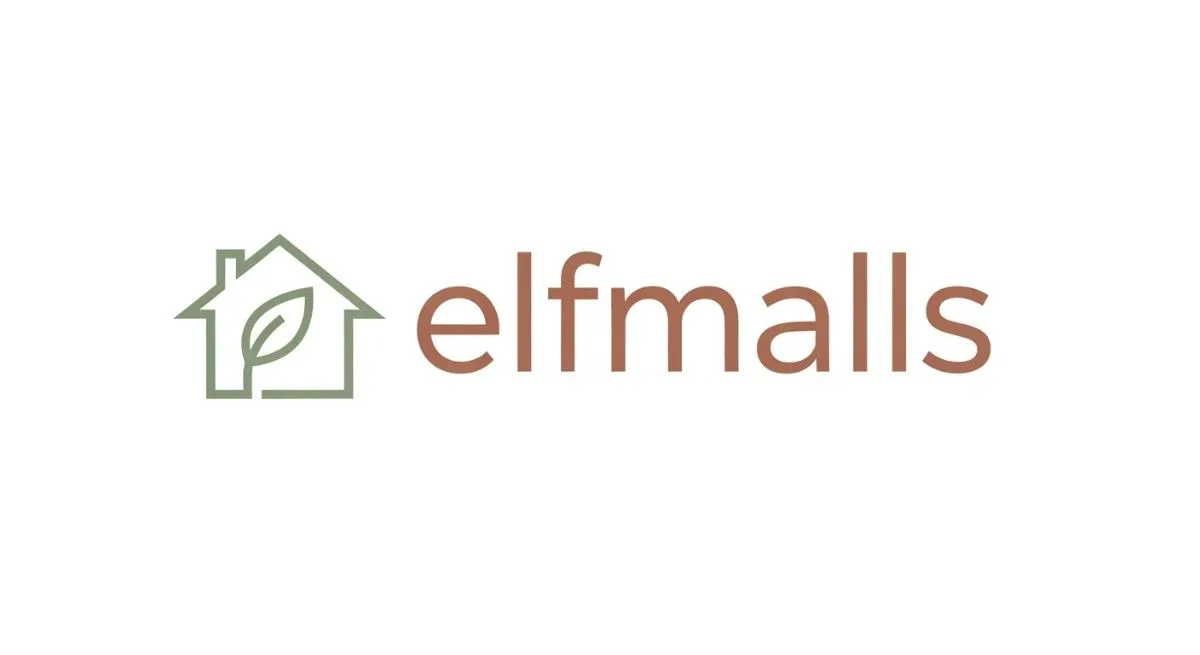How Much Is It to Install Recessed Lighting: Costs, Labor & Installation Guide
Introduction
Few home improvements offer the transformative impact of recessed lighting. Walk into a room illuminated by strategically placed recessed lights, and you’ll immediately notice the difference—spaces feel larger, ceilings appear higher, and the overall ambiance shifts from ordinary to sophisticated. Whether you’re renovating a dated kitchen, creating a home theater atmosphere in your basement, or simply updating your living room’s lighting scheme, recessed lighting delivers both functional illumination and aesthetic appeal that traditional fixtures can’t match.
But as you stand in your room envisioning where those sleek, flush-mounted lights might go, one critical question emerges: how much is it to install recessed lighting? The answer, unfortunately, isn’t a simple number. Professional recessed lighting installation cost varies dramatically based on numerous factors—from the number of fixtures you’re installing to whether you have accessible attic space above your ceiling, from the quality of fixtures you select to the prevailing labor rates in your geographic area.
Most homeowners investing in recessed lighting can expect to pay between $125 and $300 per light for professional installation, meaning a typical project involving 8-12 lights might cost anywhere from $1,000 to $3,600. However, this range represents only the middle ground—simple retrofit installations might come in lower, while complex new construction installations requiring extensive electrical work can push costs significantly higher.
This comprehensive guide will demystify recessed lighting installation cost, breaking down exactly what you’ll pay for fixtures, labor, and additional work. You’ll learn the critical differences between retrofit and new construction installations, understand how various factors affect your total investment, discover whether DIY installation might be feasible for your situation, and gain the knowledge needed to budget accurately and make informed decisions about your lighting upgrade.
Whether you’re planning a small project with four lights in a bedroom or a comprehensive whole-home lighting overhaul, this guide provides the detailed cost information and practical insights you need to move forward confidently with your recessed lighting installation.
Overview of Recessed Lighting
Before diving into costs, it’s essential to understand what you’re actually installing and the different approaches available for adding recessed lights to your home.

What Is Recessed Lighting?
Recessed lighting—also called can lights, pot lights, or downlights—consists of light fixtures installed into hollow openings in the ceiling, creating a flush, unobtrusive appearance. Unlike pendant lights, chandeliers, or surface-mounted fixtures that hang down from the ceiling, recessed lights sit completely within the ceiling structure, with only the trim and light source visible from below.
A typical recessed light fixture consists of three main components:
Housing: The metal canister that sits in the ceiling cavity and contains the electrical components and lamp holder. This is the “can” in can lights.
Trim: The visible portion that covers the gap between the housing and ceiling, available in various styles including baffle (reduces glare), reflector (maximizes light output), gimbal (adjustable direction), and decorative options.
Bulb/Light Source: Traditional incandescent, halogen, CFL, or increasingly common integrated LED units that provide the actual illumination.
Types of Recessed Light Installations
Understanding the distinction between installation types is crucial because it dramatically affects cost:
New Construction Recessed Lights: These fixtures are designed for installation during home construction or major renovation when ceiling joists are exposed. The housing mounts directly to ceiling joists before drywall is installed, making installation straightforward but only practical when you have open ceiling access. New recessed light installation of this type is typically less expensive per fixture when done during construction but impractical for existing homes without major renovation.
Retrofit (Remodel) Recessed Lights: These fixtures are specifically engineered for installation in existing ceilings with minimal disruption. They feature clips, springs, or other mechanisms that secure the housing from below through the ceiling hole, eliminating the need for attic access or extensive ceiling removal. Retrofit LED recessed lights are the most common choice for homeowners upgrading existing spaces, offering easier installation but sometimes at slightly higher fixture costs.
IC-Rated vs. Non-IC-Rated: This classification indicates whether fixtures can be in direct contact with insulation. IC-rated (Insulation Contact) fixtures have thermal protection allowing them to touch insulation safely, essential for most modern insulated ceilings. Non-IC fixtures require a clearance zone around them, making them unsuitable for many applications and potentially creating energy efficiency issues.
Airtight Fixtures: Modern building codes in many areas require airtight recessed fixtures to prevent air leakage through ceiling penetrations. These fixtures include gaskets and seals that prevent conditioned air from escaping into attic spaces, improving energy efficiency.
Benefits of Recessed Lighting
Understanding why homeowners invest in recessed lighting helps contextualize the costs:
Clean, Modern Aesthetic: Recessed lights create a minimalist, contemporary look that works with any décor style, avoiding the visual clutter of traditional fixtures while providing ample illumination.
Space Enhancement: By eliminating protruding fixtures, recessed lighting makes rooms feel larger and ceilings appear higher—particularly valuable in spaces with low ceilings or small dimensions.
Flexible Illumination: Strategic placement of multiple fixtures allows you to create layered lighting schemes with ambient, task, and accent lighting all from recessed sources, offering flexibility that single ceiling fixtures can’t match.
Increased Home Value: Quality lighting is a sought-after feature for home buyers, and professionally installed recessed lighting in key areas like kitchens, living rooms, and master bedrooms can provide strong return on investment.
Reduced Maintenance: LED recessed lights last 15-25 years or more, essentially eliminating the need for bulb replacement—a significant advantage for lights in hard-to-reach locations.
Directional Control: Unlike fixed ceiling fixtures, many recessed lights offer adjustable trims that direct light exactly where you need it, perfect for highlighting artwork, illuminating work surfaces, or creating specific ambiance.
Heat Reduction: Modern LED recessed fixtures generate minimal heat compared to traditional lighting, reducing cooling costs and eliminating the uncomfortable hot spots that incandescent fixtures created.
Factors Affecting the Cost of Recessed Lighting Installation
The cost to install recessed lighting varies considerably based on multiple factors. Understanding these variables helps you estimate your project costs accurately and identify potential areas for savings.
Number of Lights
The most obvious cost driver is simply how many fixtures you’re installing:
Per-Light Costs: Professional installation typically costs $125-$300 per fixture including both the light itself and labor. However, cost per can light often decreases on a per-unit basis as quantity increases because electricians can achieve efficiencies when installing multiple lights during a single service call.
Typical Room Requirements:
- Small bedroom or bathroom: 4-6 lights
- Medium bedroom or home office: 6-8 lights
- Large living room or kitchen: 8-12 lights
- Open concept great room: 12-20+ lights
Volume Discounts: Many electricians reduce their per-light labor rate when installing larger quantities. Installing 10-12 lights might cost $200 per light, while the same electrician might charge $250-$275 per light for just 3-4 fixtures due to minimum service call fees and reduced efficiency for small jobs.

Ceiling Height and Accessibility
The accessibility of your ceiling cavity significantly impacts installation difficulty and cost:
Standard 8-9 Foot Ceilings: These represent the baseline for pricing. Electricians can work comfortably from standard ladders, and wiring runs are straightforward.
10-12 Foot Ceilings: These add 10-20% to labor costs due to the need for taller ladders or scaffolding, increased physical difficulty of working overhead, and potentially longer wire runs.
Cathedral or Vaulted Ceilings: These can add 25-50% to labor costs due to extreme height requiring specialized equipment, difficult working angles, and often limited or no attic access for wiring.
Attic Access: Available attic space above the ceiling dramatically reduces installation cost and complexity. Electricians can run wiring through the attic, drill holes for fixtures from above, and work in more comfortable conditions. Many retrofit installations specifically target homes with accessible attics.
No Attic Access: Floors with living space above, finished basements below first floors, or multi-story buildings where the ceiling can’t be accessed from above require more invasive work. Electricians must fish wires through walls, potentially cut access holes that need later repair, or work exclusively from below through small ceiling openings—all adding substantial time and cost.
Insulation: Dense ceiling insulation complicates wiring runs and requires careful handling to maintain insulation effectiveness after installation. Some jurisdictions require insulation reinstallation or professional sealing after fixture installation, adding cost.
Labor Rates and Geographic Location
Electrician labor rate per recessed light varies significantly based on where you live:
Regional Variation:
- Urban coastal areas (New York, San Francisco, Los Angeles): $150-$250+ per light
- Major metropolitan areas (Chicago, Dallas, Atlanta): $125-$200 per light
- Mid-sized cities and suburban areas: $100-$150 per light
- Rural areas: $75-$125 per light
Hourly vs. Per-Light Pricing: Some electricians charge hourly rates ($75-$150/hour depending on location) rather than per-fixture pricing. Hourly billing can be advantageous for very straightforward installations where work proceeds quickly, but per-fixture pricing provides more predictable costs.
Licensed vs. Unlicensed: Licensed electricians typically charge 20-40% more than handymen or unlicensed workers but provide warranties, proper permits, code-compliant work, and liability insurance—critical for electrical installations where mistakes can cause fires.
Service Call Minimums: Most electricians have minimum charges ($150-$300) regardless of project size, making very small installations (1-3 lights) disproportionately expensive on a per-light basis.
Fixture Quality and Type
The fixtures themselves represent a significant portion of total cost:
Budget Fixtures ($15-$40): Basic non-IC-rated housings with separate bulbs, minimal energy efficiency, shorter lifespan, and basic trim options. Suitable for areas with little insulation concern and where cost is the primary driver.
Mid-Range Fixtures ($40-$100): IC-rated housings with LED compatibility, good build quality, various trim styles, and reasonable energy efficiency. This range represents the sweet spot for most residential installations, balancing quality and cost effectively.
Premium Fixtures ($100-$200+): Integrated LED fixtures with excellent energy efficiency, color temperature adjustability, dimming compatibility, airtight construction, extended warranties (often 5-10 years), and designer trim options. These represent the best long-term value despite higher upfront costs.
Smart Fixtures ($150-$300+): Connected fixtures with app control, voice assistant compatibility, color changing capabilities, and integration with home automation systems. These premium options appeal to tech-focused homeowners building comprehensive smart home systems.
Trim Style: Basic white baffle trims are most affordable. Decorative trims (brushed nickel, oil-rubbed bronze, etc.), eyeball/gimbal adjustable trims, or specialty options like shower-rated wet location trims add $10-$50 per fixture.
Additional Electrical Work Required
Beyond basic fixture installation, your project might require supplementary electrical work:
New Circuit Installation: If your existing electrical panel doesn’t have capacity for additional lighting, or you want recessed lights on a dedicated circuit, running new circuits from the panel costs $200-$500 per circuit including breaker, wire, and labor.
Junction Box Installation: Code often requires accessible junction boxes for connections. If your installation needs new junction boxes, expect $50-$150 each including materials and labor.
Switch Installation: New lighting requires switching, and if you’re adding recessed lights where no ceiling lighting existed, installing new switches costs $75-$200 per switch location including box, wire, switch, and labor.
Dimmer Switches: Many homeowners add dimmer capability to recessed lighting. Quality LED-compatible dimmers cost $30-$100 for the device plus $50-$125 for installation labor per switch.
Wire Running: If substantial wire running is required through walls or difficult spaces, electricians may charge $2-$5 per linear foot of wire run beyond what’s included in basic per-light pricing.
Drywall Repair and Painting: Ceiling access / drywall repair cost for recessed lights varies based on how invasive installation must be. Simple patching around fixtures costs $50-$150 for an entire project. Extensive repair requiring drywall replacement, taping, texturing, and painting can add $300-$800 or more, particularly if you need to match specific ceiling textures.
Ceiling Type and Material
What your ceiling is made of affects installation complexity:
Standard Drywall: The easiest material to work with, drywall cuts cleanly and repairs relatively simply, representing the baseline for pricing.
Plaster and Lath: Older plaster ceilings are more fragile and crack easily, requiring extreme care during cutting and often necessitating professional plaster repair afterward. Installation in plaster ceilings typically adds 20-40% to costs.
Popcorn/Acoustic Texture: These textured ceilings complicate installation because texture removal is often necessary around fixtures and matching texture afterward is difficult. Many contractors charge extra ($25-$50 per light) for work in popcorn ceilings.
Drop/Suspended Ceilings: Installing recessed lights in grid ceilings is actually easier than drywall in some ways, with special fixtures designed to rest on the grid. However, options are more limited and fixtures may cost slightly more.
Concrete Ceilings: Rare in residential settings but found in some condos or modern construction, concrete ceilings require specialized equipment and expertise, potentially doubling or tripling installation costs.
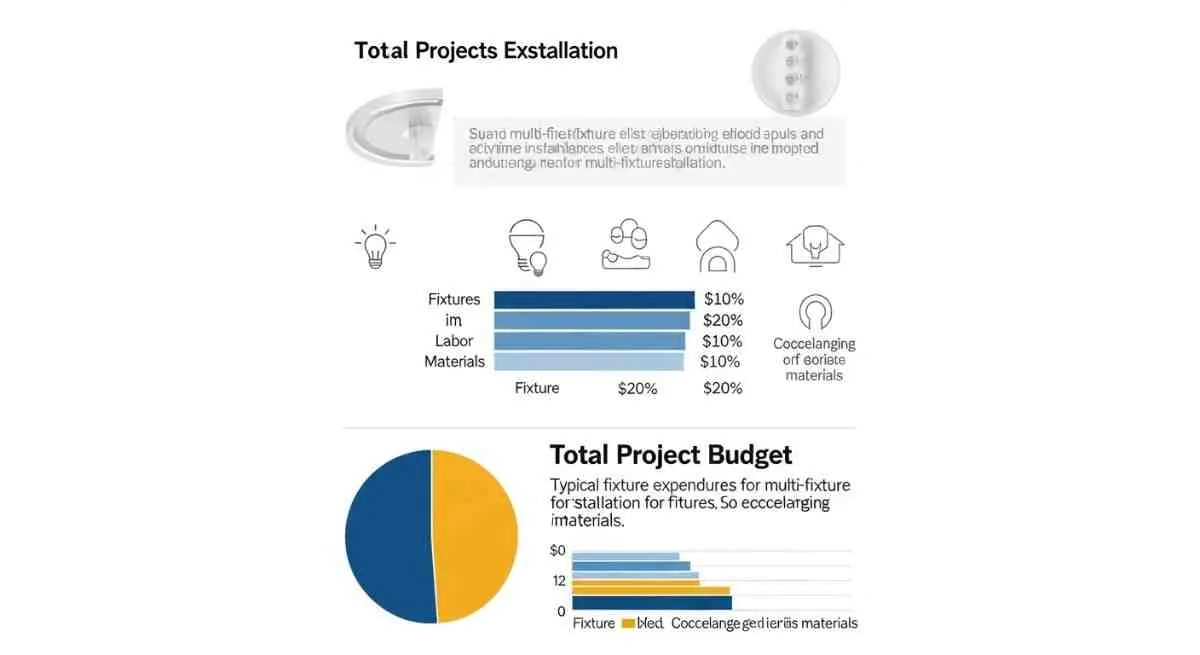
Cost Breakdown: What You’ll Actually Pay
Understanding the specific components of recessed lighting installation cost helps you budget accurately and compare quotes effectively.
Cost Per Fixture
Recessed lighting cost per fixture including both materials and labor typically falls in these ranges:
Budget Installation ($100-$150 per light):
- Basic retrofit housing: $20-$40
- Standard bulb (if not integrated): $5-$15
- Basic white baffle trim: Included with housing
- Labor for straightforward installation: $75-$100
- Total per light: $100-$155
This budget approach works for secondary spaces, simple installations with excellent attic access, and situations where upfront cost is the primary concern. Fixtures at this level typically aren’t IC-rated or airtight, may not be LED, and offer minimal longevity or energy efficiency.
Mid-Range Installation ($150-$225 per light):
- IC-rated retrofit housing: $50-$80
- LED bulb or integrated LED fixture: $15-$30
- Standard trim in choice of finish: Included to $20
- Professional installation labor: $100-$140
- Total per light: $165-$270
This range represents the most common choice for residential upgrades, providing IC-rated housings, LED efficiency, reasonable fixture quality, and professional installation. Suitable for primary living spaces including living rooms, kitchens, and master bedrooms.
Premium Installation ($225-$300+ per light):
- Premium integrated LED IC-rated airtight housing: $100-$180
- Designer trim or adjustable gimbal: $20-$40
- Professional installation with attention to detail: $125-$150
- Total per light: $245-$370
Premium installations deliver maximum energy efficiency, longest lifespan (20-25 years), code-compliant airtight construction, designer aesthetics, and superior light quality. Best for whole-home installations, luxury renovations, or homeowners prioritizing quality and long-term value over initial cost.
Labor Cost Breakdown
Understanding electrician labor rate per recessed light helps you evaluate quotes:
What’s Included in Labor:
- Marking and cutting ceiling holes (using hole saw or jab saw)
- Running wiring from power source to each fixture location
- Fishing wires through ceiling cavities or attic spaces
- Installing junction boxes if required by code
- Mounting fixture housings according to manufacturer specifications
- Making all electrical connections and testing
- Installing trims and adjusting aim
- Final inspection and testing of all fixtures
- Basic cleanup of installation debris
Labor Time Estimates:
- First fixture (includes setup, power source connection, switch installation): 2-3 hours
- Additional fixtures with accessible attic: 0.5-1 hour each
- Additional fixtures without attic access: 1-1.5 hours each
Typical Labor Costs:
- Straightforward installation (accessible attic, standard ceiling height): $75-$125 per light
- Moderate difficulty (limited access, higher ceilings): $125-$175 per light
- Complex installation (no access, difficult wiring, high ceilings): $175-$250 per light
Full Project Costs by Scope
Here’s what you can expect to pay for complete projects of various sizes:
Small Project (4-6 Lights):
- Fixtures (mid-range): $250-$480
- Labor: $500-$900
- Electrical supplies (wire, boxes, switches): $75-$150
- Total project cost: $825-$1,530
- Average: $1,150-$1,200
Suitable for bedrooms, small bathrooms, home offices, or accent lighting in specific areas.
Medium Project (8-10 Lights):
- Fixtures (mid-range): $400-$800
- Labor: $800-$1,500
- Electrical supplies: $100-$200
- Total project cost: $1,300-$2,500
- Average: $1,800-$2,000
Cost for 8-12 recessed lights projects of this scale are common for living rooms, kitchens, or multiple-room installations.
Large Project (12-16 Lights):
- Fixtures (mid-range): $600-$1,280
- Labor: $1,200-$2,400
- Electrical supplies: $150-$300
- Potential new circuit: $200-$500
- Total project cost: $2,150-$4,480
- Average: $3,000-$3,500
Appropriate for open-concept living spaces, comprehensive kitchen renovations, or whole-floor lighting upgrades.
Whole-Home Project (20-40 Lights):
- Fixtures (mid-range): $1,000-$3,200
- Labor: $2,000-$5,000
- Electrical supplies and new circuits: $400-$800
- Drywall repair and painting: $400-$1,000
- Total project cost: $3,800-$10,000
- Average: $6,000-$7,500
Comprehensive whole-home lighting overhauls installing recessed lighting throughout main living areas, bedrooms, and hallways.
Retrofit vs. New Construction Costs
Understanding the difference between these approaches affects your budget:
Retrofit Installation (existing ceiling):
- Retrofit housing fixtures: $50-$120 each
- Labor: $100-$175 per light (depending on access)
- Drywall repair: $50-$150 for entire project
- Typical total: $150-$295 per light installed
Retrofit LED recessed lights cost represents the most common residential scenario. While individual fixture costs are slightly higher than new construction housings, and labor may be more intensive without open ceiling access, retrofit remains the only practical option for most finished homes.
New Construction Installation (during build or major renovation):
- New construction housing: $30-$80 each
- Labor (with open ceiling joists): $50-$100 per light
- Typical total: $80-$180 per light installed
New construction installations are significantly cheaper per fixture because electricians work in open ceilings before drywall installation, making wire running and fixture mounting straightforward. However, this approach is only practical during initial construction or major renovations involving ceiling removal.
Key Takeaway: If you’re doing major renovation work that involves removing drywall anyway, plan recessed lighting installation during that phase to maximize cost efficiency. For all other situations, retrofit fixtures are your only practical option despite higher costs.
Additional Costs and Fees
Beyond basic installation, budget for potential additional expenses:
Permits: Electrical permits typically cost $50-$200 depending on locality and project scope. Professional electricians usually obtain these and include costs in quotes, but verify.
Inspection Fees: Some jurisdictions charge separate inspection fees ($50-$150) beyond permit costs. Again, professionals typically include these.
Fixture Disposal: If you’re removing old fixtures, disposal might cost $25-$75 depending on quantity and local regulations.
Emergency/After-Hours Service: If you need installation outside normal business hours, expect premium rates 25-50% above standard charges.
Travel Fees: Some electricians charge trip fees ($50-$100) for locations outside their primary service area.
Complexity Surcharges: Unexpected complications (discovering knob-and-tube wiring, encountering structural issues, finding inadequate electrical capacity) can add $200-$1,000+ to projects.
DIY vs. Professional Installation
Many homeowners consider handling recessed lighting installation themselves to save money. Let’s examine whether this approach makes sense for your situation.
DIY Cost Analysis
Tool and Material Costs:
- Recessed light fixtures: $50-$120 each
- Electrical wire (14/2 or 12/2 Romex): $0.50-$1 per foot
- Wire connectors, junction boxes, cable clamps: $20-$40
- Light switch and box: $15-$40
- Hole saw set for ceiling cutting: $30-$60 (if you don’t own)
- Wire strippers, fish tape, voltage tester: $40-$80 (if you don’t own)
- Stud finder: $20-$50 (if you don’t own)
- Ladder tall enough to reach ceiling comfortably: $100-$300 (if you don’t own)
- Total DIY cost for 8 lights: $600-$1,300
DIY Savings: For an 8-light project that might cost $2,000 professionally, DIY could save $700-$1,400 depending on what tools you already own. However, this assumes successful installation without errors that require repair or professional correction.
Time Investment
DIY Time Requirements:
- Research and planning: 3-5 hours
- Purchasing materials: 2-3 hours
- Installation (first-time DIYer): 12-20 hours for 8 lights
- Troubleshooting and corrections: 2-6 hours
- Total time investment: 19-34 hours
Professional Time:
- One consultation/quote visit: 1 hour
- Installation: 6-10 hours (typically completed in one day)
- Your personal time involvement: 1-2 hours
- Total time investment: 1-2 hours of your time
At an opportunity cost of $25-$50/hour (what you could earn or value your leisure time), DIY’s time investment represents $475-$1,700 in value, potentially eliminating the financial advantage entirely depending on how you value your time.
Safety and Code Compliance
Electrical Safety Risks:
- Shock hazard: Working with 120V household wiring presents serious shock risks, particularly for those unfamiliar with proper procedures
- Fire risk: Improper wiring connections, overloaded circuits, or installation of non-IC-rated fixtures in contact with insulation can cause house fires
- Fall hazard: Extended periods working from ladders with arms overhead creates significant fall risk, particularly when fatigued
Code Compliance Concerns:
- Permit requirements: Many jurisdictions require permits for new electrical installations, even DIY work
- Inspection requirements: Permitted work typically requires professional inspection before use
- IC rating requirements: Building codes mandate IC-rated fixtures in insulated ceilings
- Airtight requirements: Energy codes in many areas now require airtight fixtures
- Box fill calculations: Code limits the number of wires in junction boxes
- AFCI requirements: Modern codes often require arc-fault circuit breaker protection for new lighting circuits
DIY Code Violations: Amateur installations frequently violate code requirements, potentially creating insurance claim denials if fire or other incidents occur, complications during home sale when inspections reveal violations, and requirements to hire professionals to correct violations before closing sales.

Skill Level Required
Beginner-Friendly Aspects:
- Retrofit fixtures designed for DIY installation with simple clip mechanisms
- Abundant online tutorials and instruction videos
- Straightforward wiring connections (typically just black-to-black, white-to-white, ground-to-ground)
- Layout planning is intuitive for most room configurations
Challenging Aspects:
- Fishing wires through ceiling cavities or walls requires patience and technique
- Cutting precise ceiling holes without damaging joists or wiring
- Calculating electrical load and ensuring circuit capacity
- Identifying and working safely around existing wiring
- Troubleshooting when fixtures don’t work as expected
- Achieving professional-looking alignment and spacing
Realistic Assessment: A reasonably handy homeowner with basic electrical understanding can successfully install retrofit recessed lights in a room with accessible attic space. However, installations without attic access, in high ceilings, or requiring new circuit work should generally be left to professionals.
When DIY Makes Sense
Consider DIY installation if:
- You have basic electrical knowledge and comfort working with wiring
- Your ceiling has accessible attic space above
- You’re installing 6-8 or more lights (better cost efficiency)
- You have adequate time for a methodical, unhurried approach
- You’re physically capable of extended overhead work from ladders
- You’re willing to obtain permits and schedule inspections
- You’re using straightforward retrofit fixtures in standard 8-9 foot ceilings
- You have basic tools or are willing to invest in them for future projects
When Professional Installation Makes Sense
Hire a professional electrician if:
- You lack electrical experience or are uncomfortable with wiring
- Your ceiling has no attic access or very limited access
- You’re installing lights in high cathedral or vaulted ceilings
- Your project requires new circuit installation or panel work
- You suspect existing wiring issues (knob-and-tube, aluminum, undersized)
- You need work completed quickly
- You want code-compliant installation with permits and inspections
- You value the warranty and liability protection professionals provide
- The cost difference isn’t prohibitive for your budget
Hybrid Approach
Some homeowners find middle ground:
- Hire an electrician to run new circuits and make panel connections, then install fixtures yourself using that prepared wiring
- Install fixtures in easy locations (accessible attic, standard height) yourself, hire professionals for difficult spots (high ceilings, no access areas)
- Purchase and stage all materials yourself, hire labor-only electrical help for actual installation
- Complete installation yourself, pay for professional inspection to ensure code compliance
Case Studies & Real-Life Examples
Examining specific scenarios helps translate general cost information into concrete expectations for your situation.
Case Study 1: Small Bedroom – Budget Retrofit
Property Details:
- 12′ × 14′ bedroom in single-story ranch home
- 8-foot ceilings with accessible attic above
- Existing ceiling light being replaced
- Desired: 6 recessed lights for even illumination
Approach: Homeowner handled installation DIY using mid-range retrofit fixtures.
Costs:
- 6 IC-rated LED retrofit fixtures: $60 each = $360
- Electrical wire and supplies: $45
- New dimmer switch: $35
- Hole saw (purchased): $40
- Total cost: $480
Time Investment: 12 hours over two weekends (first-time DIYer learning process)
Results: Successful installation with attractive, even lighting. Minor ceiling texture matching imperfections around two fixtures. Homeowner reported: “It took longer than expected and I made a few mistakes, but the results look great and I saved probably $800 versus hiring an electrician. Having attic access made this feasible—I couldn’t have done this without it.”
Professional Cost Comparison: Local quotes averaged $1,200-$1,400 for the same 6-light installation.
Case Study 2: Kitchen Renovation – Mid-Range Professional
Property Details:
- 15′ × 18′ kitchen in two-story colonial home
- 9-foot ceilings with living space above (no attic access)
- Complete kitchen renovation including recessed lighting upgrade
- Desired: 12 recessed lights replacing old fluorescent fixtures
Approach: Professional installation during kitchen renovation when some ceiling drywall was removed anyway.
Professional Quote Breakdown:
- 12 IC-rated airtight LED fixtures: $90 each = $1,080
- New dedicated 15-amp circuit from panel: $350
- Labor for installation: $125 per light = $1,500
- Three-way dimmer switch system: $175
- Permits and inspection: $125
- Total cost: $3,230
Timeline: Two days for electrical rough-in before drywall, one day for fixture installation and trim-out after drywall completion.
Results: Homeowner reported excellent satisfaction. The kitchen’s illumination dramatically improved, with adjustable dimming allowing mood setting. Professional installation coordinated seamlessly with other renovation work. “The $3,200 was substantial, but the transformation is incredible. We use the kitchen constantly, and the lighting makes a huge difference. Professional installation during renovation made sense—doing it afterward would have been more expensive and disruptive.”
DIY Consideration: Homeowner initially considered DIY but concluded that the no-attic-access situation and the complexity of coordinating with other renovation work made professional installation the right choice.
Case Study 3: Living Room – Premium Smart Lighting
Property Details:
- 18′ × 24′ living room with vaulted ceiling (peak at 16 feet)
- Desired: 16 recessed lights with smart home integration
- Existing outdated track lighting being replaced
- Goal: Create sophisticated ambiance with app and voice control
Approach: Premium professional installation with smart LED fixtures.
Professional Quote Breakdown:
- 16 premium smart LED IC-rated fixtures with color temperature adjustment: $180 each = $2,880
- Labor for vaulted ceiling installation (premium rates): $175 per light = $2,800
- Smart hub and integration setup: $350
- Two new circuits (required for load): $700
- Professional design consultation: $200
- Specialized lift equipment rental: $300
- Total cost: $7,230
Timeline: Three days including planning, installation, and smart home setup.
Results: Exceptional transformation creating theater-like ambiance for entertainment and bright, functional lighting for daily activities. Voice control and scheduling automation highly appreciated. Homeowner reported: “This was expensive—nearly double what basic fixtures would have cost—but we love the smart features and the adjustable color temperature. The vaulted ceiling made professional installation essential. We couldn’t have safely done this ourselves, and the results are exactly what we wanted.”
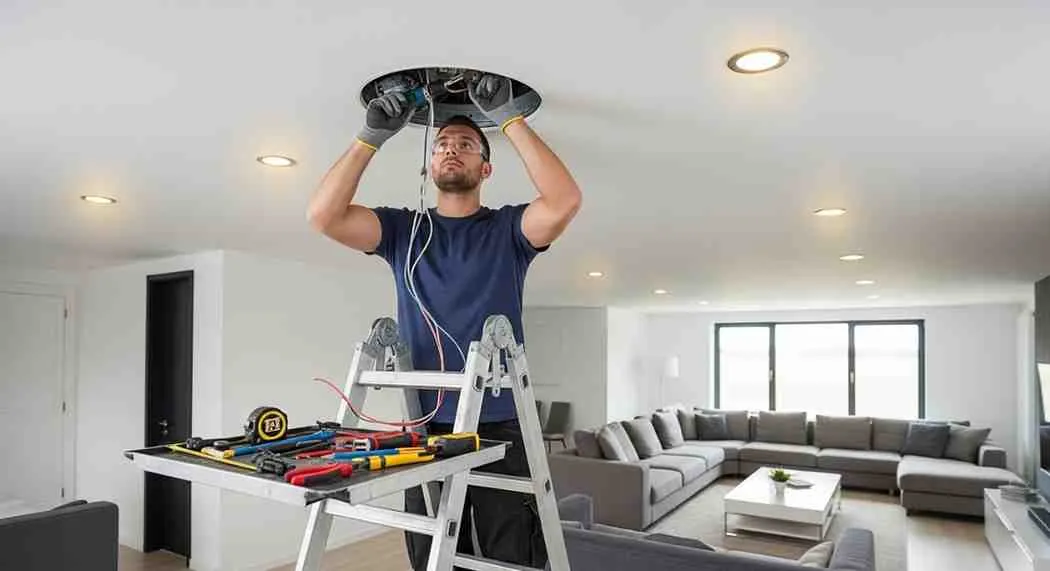
Case Study 4: Whole-Home Upgrade – Multi-Room Project
Property Details:
- 2,400 sq ft single-story ranch with accessible attic throughout
- Upgrading lighting in living room, kitchen, dining room, master bedroom, and hallways
- Total: 32 recessed lights throughout home
- Mix of existing ceiling fixtures being replaced and new lighting additions
Approach: Professional installation with volume pricing discount.
Professional Quote Breakdown:
- 32 IC-rated LED fixtures: $75 each = $2,400
- Labor (discounted rate due to volume): $100 per light = $3,200
- Three new circuits: $900
- Seven dimmer switches: $700
- Design consultation and layout planning: $400
- Drywall repair and ceiling touch-up paint: $500
- Permits: $180
- Total cost: $8,280
- Per-light average: $259
Timeline: Five days spread over two weeks to minimize disruption.
Results: Comprehensive lighting transformation of entire home. Volume discount reduced per-light cost by approximately $30-$40 compared to smaller projects. Homeowner reported: “We shopped quotes from four electricians and chose the mid-range bid. The whole-home approach made sense because we got better pricing than doing rooms individually, and now all our lighting is modern, efficient, and attractive. The project was expensive, but amortized over the entire house and the 20+ year LED lifespan, it’s reasonable.”
Cost Comparison: If completed room-by-room in separate projects, estimated total cost would have been $10,500-$11,500 based on typical smaller-project pricing.
Case Study 5: Basement Finishing – New Construction Approach
Property Details:
- 1,000 sq ft unfinished basement being converted to entertainment space
- Open ceiling joists before drywall installation
- Desired: 18 recessed lights throughout space
- Part of larger basement finishing project
Approach: New construction fixtures installed before drywall as part of finishing project.
Cost Breakdown:
- 18 new construction IC-rated housings: $45 each = $810
- Labor (with open ceiling access): $65 per light = $1,170
- Two new circuits: $600
- Four dimmer switches: $480
- Total electrical cost: $3,060
- Per-light average: $170
Results: Significant cost savings compared to retrofit installation that would have been required after drywall completion. Homeowner reported: “Our contractor recommended planning all recessed lighting before closing up the ceiling. I’m glad we did—the electrician said retrofit installation after drywall would have cost about $4,500 instead of $3,000. The open ceiling access made installation much faster and easier.”
Key Lesson: When finishing unfinished spaces or doing major renovations involving ceiling removal, always plan electrical work including recessed lighting before closing up ceilings. The cost difference can be 40-60% for the same number of fixtures.
